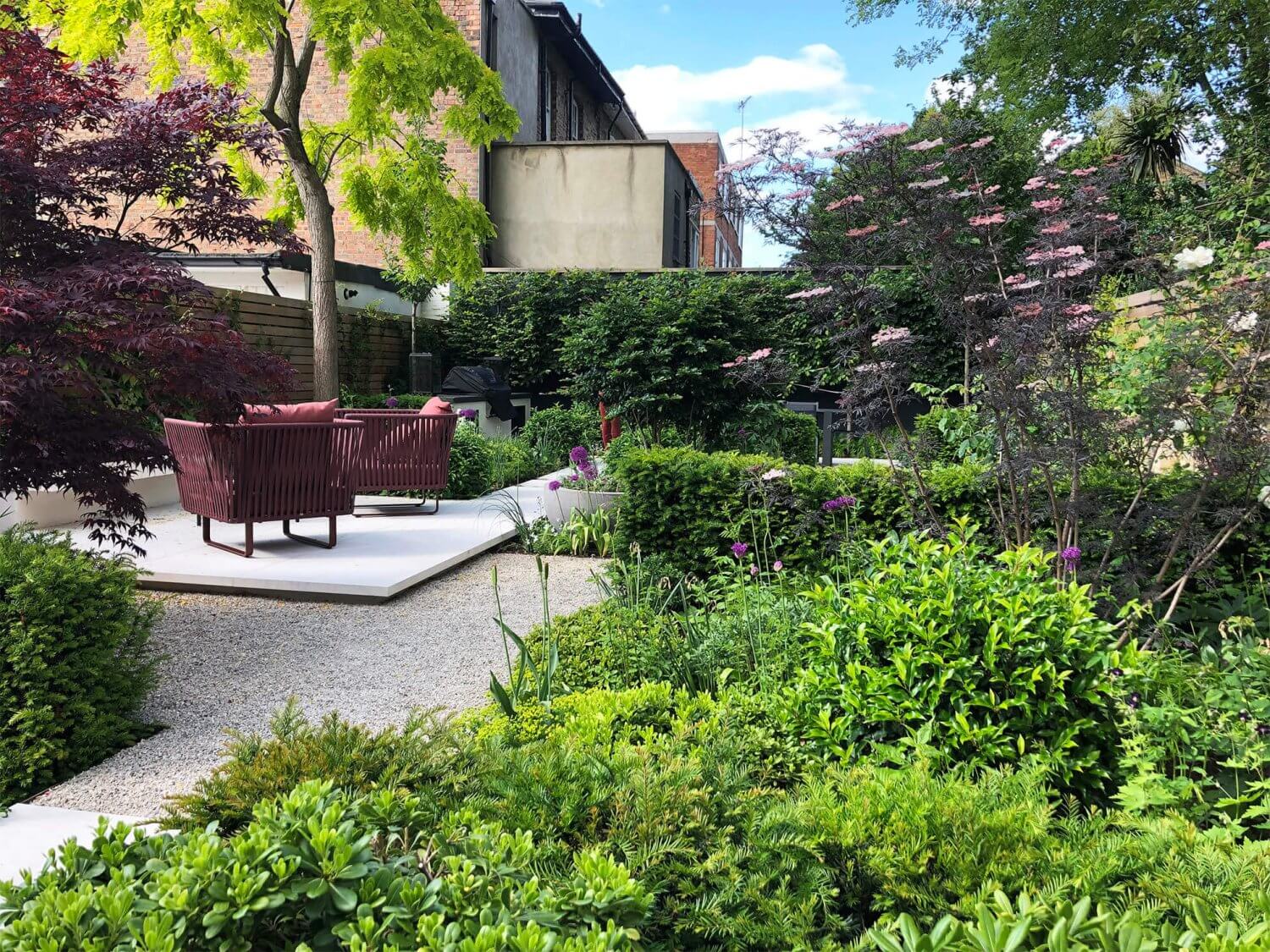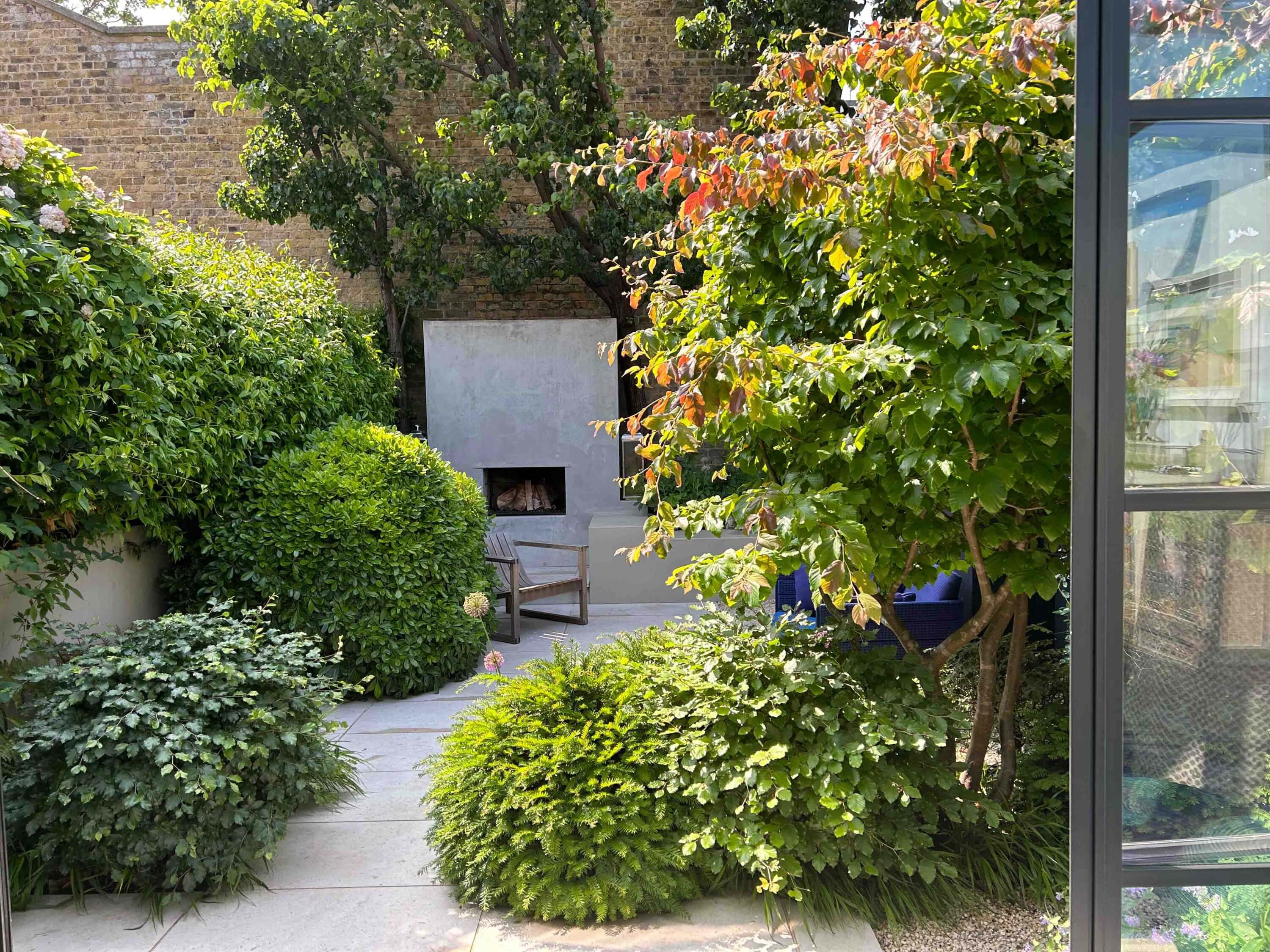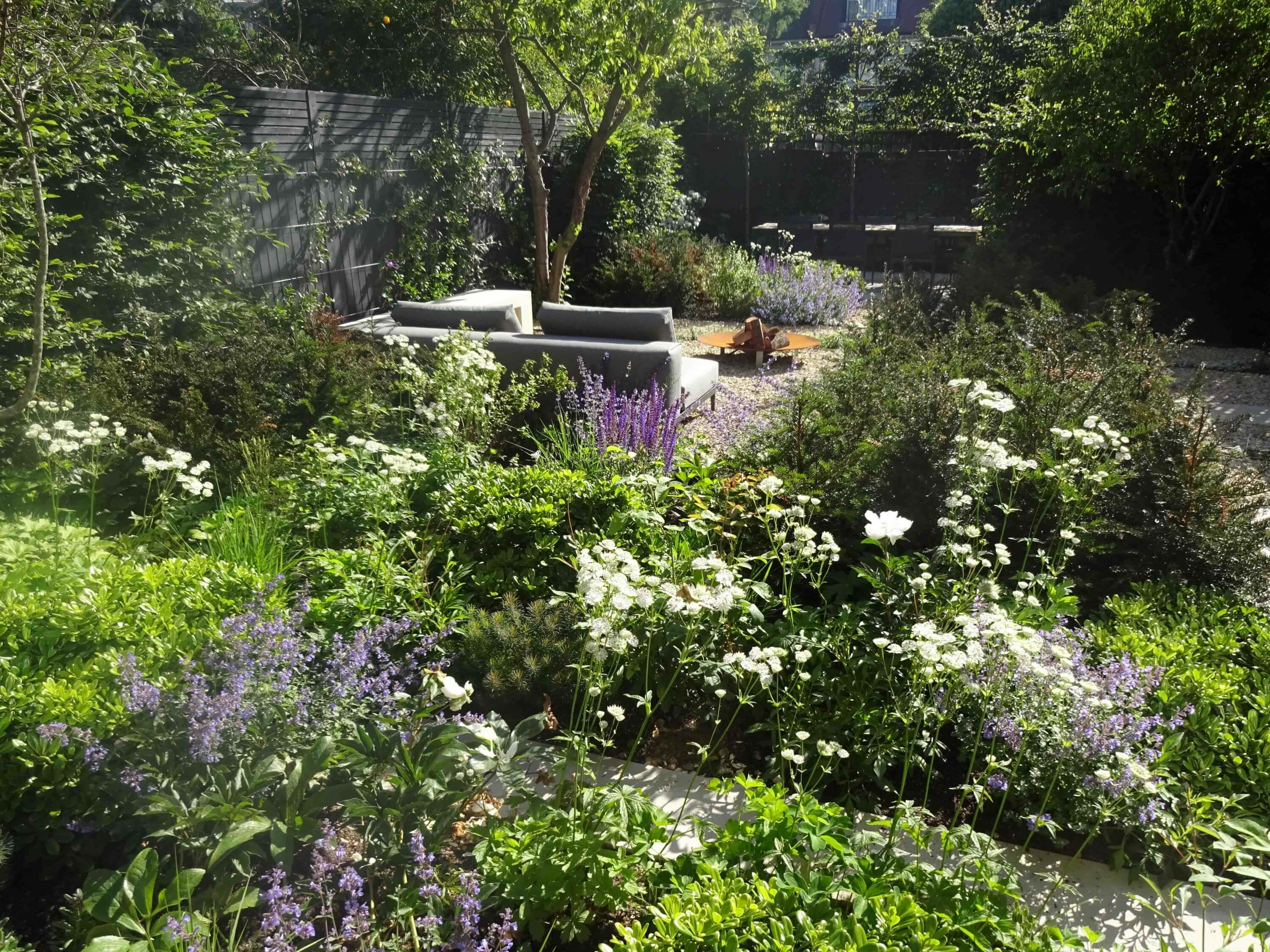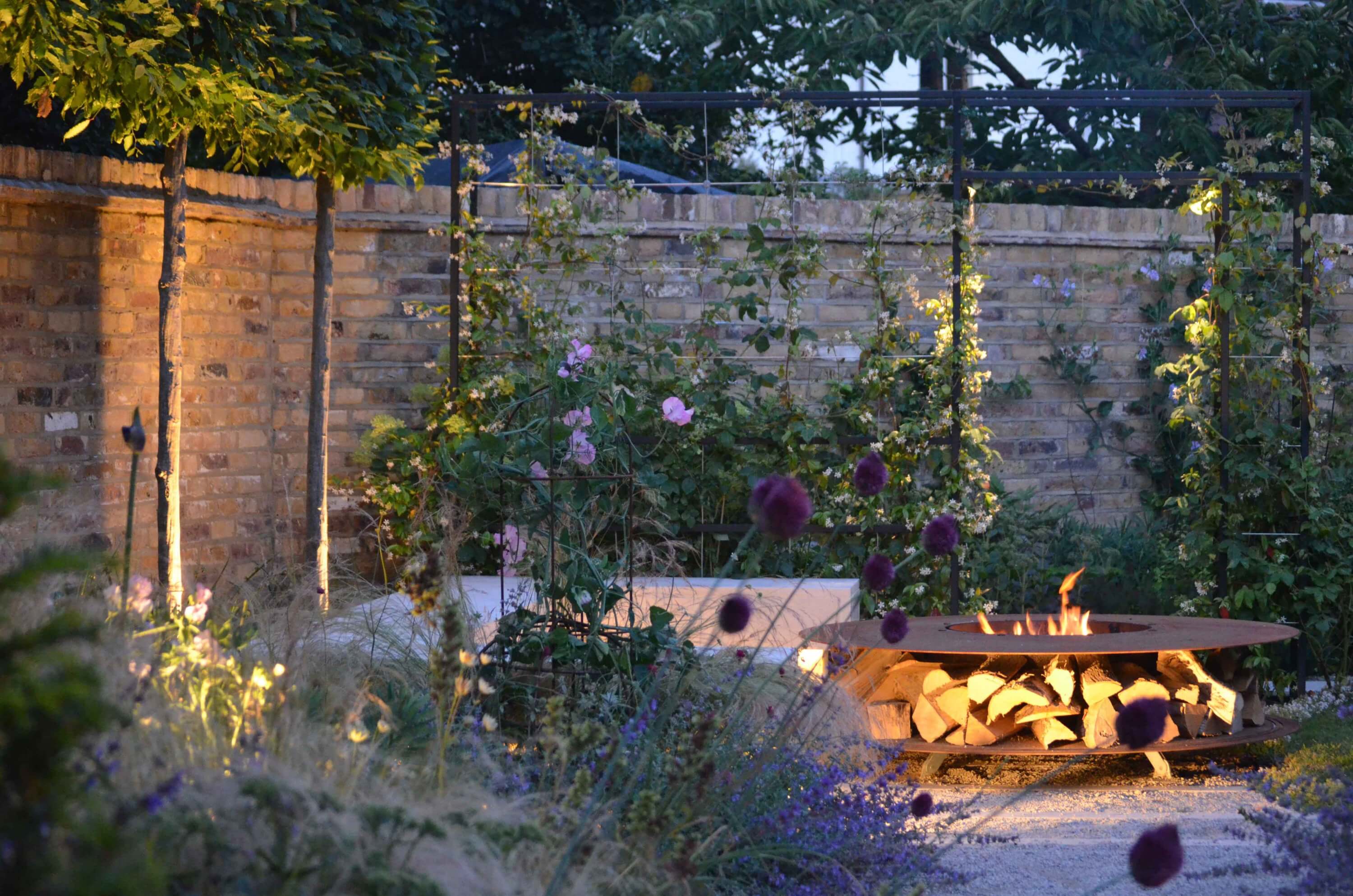
© Charlotte Rowe

© Charlotte Rowe
There was a time when London gardens were little more than an afterthought – a weary strip of astroturf, a tired patio, perhaps a forgotten barbecue or a trampoline rusting in the corner. But lockdown changed everything. Outdoor space became not just desirable, but essential. Today’s buyers expect far more: gardens that are thoughtfully designed and planted, offer privacy and are conceived as a true extension of the home.
As Edward Dennett, Associate Director at Wilfords’ Wandsworth office, notes: “People want their gardens to be properly planted and ideally landscaped – no more bare, utilitarian plots.” In recent years, there has been a clear shift among London homeowners towards creating gardens that not only look beautiful but also support biodiversity, with wildlife-friendly planting schemes to attract pollinators.
Privacy, once achieved with stark fencing or high walls, is now more artfully handled. “Pleached hornbeams or evergreen screens are preferred – softening boundaries while maintaining seclusion,” says Edward.
And these shifts in priorities with South West London property are reflected in their pricing. “In this area, a beautifully landscaped garden can add as much as 20% to the value of the house,” says Edward. This potential uplift is significant, particularly in prime postcodes such as Battersea, Clapham, Abbeville Village, Wandsworth and Barnes, where well-designed outside space can seal a sale – or command a premium.
Buyers are drawn to gardens that feel like a true continuation of the home – spaces that are as practical as they are pleasing. Features such as structured planting, defined seating areas and low-maintenance landscaping all contribute to making a property more attractive. With over half of homeowners now using their gardens for hosting and dining, outdoor entertaining areas are in strong demand. A carefully designed space with a large dining table, an integrated seating zone, or a parasol with discreet lighting instantly creates an aspirational environment that resonates with buyers. At the same time, families are prioritising gardens that offer safe, flexible space for children to play – whether that’s an open lawn, a shaded corner for a sandpit, or simply room to roam.
For those looking to elevate both functionality and aesthetics, a thoughtfully positioned backyard shed can complement landscaping beautifully. Beyond storage, these structures can serve as focal points, blending seamlessly with plantings and paved areas. Many homeowners now enhance their sheds with features such as a glass room, which invites natural light and creates a bright, airy corner for relaxation or casual entertaining. Whether used for storing gardening tools, housing outdoor cushions, or simply adding a touch of charm, a well-designed shed integrates effortlessly into the garden, making the outdoor space feel like a true extension of the home.

© Charlotte Rowe
Charlotte Rowe, an award-winning garden designer who specialises in small city gardens, agrees that precision and purpose are essential in urban plots. “You need to use every inch and centimetre; the design has to be precise and detailed,” she says. “Lines and shapes must work perfectly with the architecture of the house – as we say: ‘the design is in the detail.’”
This interplay between inside and out is key to adding value. “We work closely with architects and interior designers as well as our clients to ensure that materials, colours and even planting palettes echo the style of the interiors,” Charlotte explains. Many homeowners are opting to use the same tiles for their kitchen floors and patios to create a seamless visual flow – a design decision that Edward confirms is highly attractive to buyers looking for space and cohesion, as well as an indoor / outdoor lifestyle. “We would not recommend using porcelain tiles outside on our clients’ terraces,” Charlotte cautions. “We always design using natural stone.”
Another hallmark of clever garden design, says Charlotte, is creating the illusion of space. “Even in the smallest gardens, you can introduce a sense of journey or destination,” she notes. “Paving can be laid to make a garden appear wider or longer; lateral lines of planting or materials slow the way the eye travels across the space, making it feel larger than it is.” Boundaries, too, can be softened or disguised with dark-painted fences or lush planting to make the garden seem deeper and more generous.
Charlotte warns against relying solely on evergreen planting. “If you fill a small garden with evergreens alone, it will look the same all year – and that’s boring,” she says. “We mix structural evergreen plants with some seasonal planting to give it year-round interest.”

© Charlotte Rowe
This attention to detail reflects wider market demands. Buyers increasingly expect outdoor structures – summerhouses, studios, garden offices – that are flexible, insulated and beautifully finished. “A summerhouse that can double as a home office, gym or yoga studio is an attractive proposition,” says Edward. “It can also be added to the property’s overall square footage, which is a significant selling point in these areas.”
Lighting can completely change how a garden feels and how it’s used, adding drama, warmth and depth. “Good quality and well-designed garden lighting is key in town gardens as for around half the year, they are viewed at night,” advises Charlotte.
For sellers – or indeed anyone looking to future-proof their home’s value as well as maximising their enjoyment of their home – these details matter. A thoughtfully designed garden offers not only aesthetic pleasure but measurable return on investment. As Edward puts it: “In South West London, where outside space is so prized, the garden has become as important as any other room in the house. A well-designed garden doesn’t just enhance a home – it completes it.”
Contact Us
Kensington:
+44 (0) 20 7361 0400
Wandsworth:
+44 (0) 20 7361 0410
Clapham:
+44 (0)20 7361 0410
Barnes:
+44 (0) 20 7036 9330